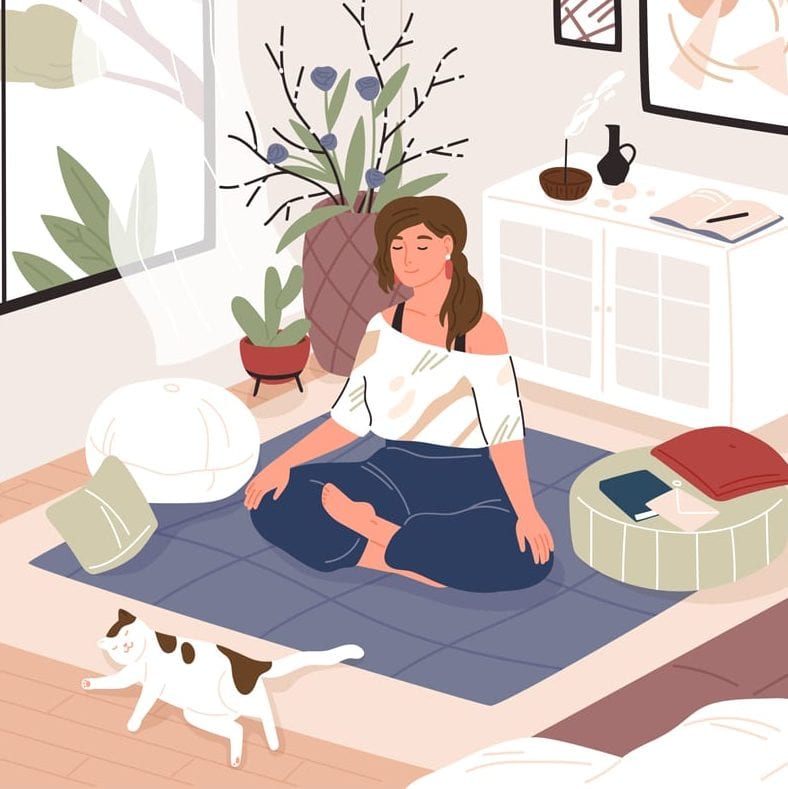Can you think of anyone in your circle of friends and family who isn’t stressed? We don’t need stats to tell us that we are collectively experiencing a stress epidemic — a situation exacerbated due to the global pandemic. While being stressed occasionally is one thing, many of us are constantly stressed, which can lead to burnout. Often this has to do with something called the stress cycle. We feel stressed, don’t complete the stress cycle, and never fully recover. Here, we look deeper at the stress cycle and why completing it is so important.
Understanding the stress cycle

While there are some universal stresses, often what stresses you out is individual to you. When we experience stress, our bodies have a system for reacting to it. “Stress causes our cortisol and adrenaline to spike, activating the sympathetic nervous system,” says Bex Spiller, founder of The Anti-Burnout Club. Often this is known as your fight or flight response. “Depending on your stress levels, you might then experience physical symptoms of stress such as a higher heart rate, or emotions such as worry or anxiety,” she added. In an extreme example, when you’re facing danger, like you’re about to get into a car accident, your body learns that you’re safe after escaping the accident unharmed. That completes the full stress cycle.
But in our busy, everyday lives, we often carry on without dealing with our stress. The cycle is not completed. “Most of us are living in a state of constant stress. We are never completing the stress cycle and resetting to normal,” says Julie Leonard, certified life coach. Say you’re watching the news about something terrible happening in your hometown. Your adrenaline levels start to spike, you scroll through social media to find info, or you might panic drink a glass of wine.
The issue is that these go-to responses for “dealing” with stress don’t often actually help you deal with the stress. “Typically, these are habits and learned behaviors we’ve picked up over time, and they’re not always helpful or healthy coping mechanisms,” says Spiller. This puts you in a state of constantly “activated” stress that can lead to health issues like “increased blood pressure, a greater risk of heart disease, anxiety, sleep problems, digestive issues, headaches, and depression,” says Spiller.

However, when we complete the stress cycle and develop healthier coping methods, we can reduce our chronic stress and burnout risk. The best way to do this is by activating our parasympathetic nervous system (called the ‘rest and digest’). “This is best done by partaking in activities which bring you back to the present moment. Mindfulness and meditation are great, but there are many other options too,” says Leonard.
The best ways to complete the stress cycle
Breathwork
“Conscious breathing or breathwork is one way to signal to our parasympathetic nervous system that we’re safe and the body can relax. Long and deep exhalations are key here, so try breathing out for longer than you breathe in,” Spiller suggested. The 4-7-8 breathing technique can help here. Breathe in for a count of four, hold for seven, and then a nice big exhale for eight.

Get moving
“Movement helps you get that cortisol out of your system and boost positive hormones like endorphins,” Leonard explained. Whether running, walking, yoga, or the gym, find something you love doing and do it — it will help your stress system reset.
Open up
Talking to someone about how you are feeling can often mean a weight is lifted off your shoulders. When you speak to someone about how you’re feeling, this signals to the body that you are safe and calmer. “We may find it easier to withdraw and hide away for fear of burdening others with our emotions, but the most resilient people who adapt well to stress do the opposite. Instead of trying to deal with everything on your own, reach out to friends, family, loved ones, or even specific community groups,” Spiller pointed out.
Journal
“Taking pen to paper and writing freely is a powerful tool,” Leonard suggested. Through journaling, allow yourself to write whatever you want and feel all the feelings you are experiencing. This helps you reflect, process, and complete the cycle.

Have a hug
If it’s available to you, physical connection through hugging is an amazing free, and easy way to feel calmer. “Just a 20-second hug releases oxytocin, the feel-good hormone that helps calm the nervous system,” Leonard said.






